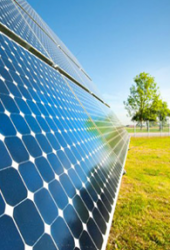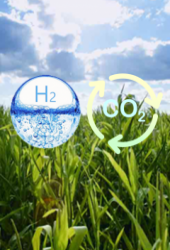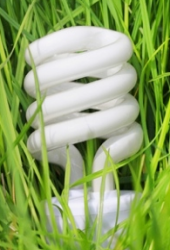Detail:
- ABSTRACT
The objective of this research is to investigate a procedure to improve the existing energy management system based on The Energy Conservation Promotion Act B.E. 2535 (1992) (as amended by Energy Conservation Promotion Act (No.2) B.E. 2550 (2007)) to meet the requirements of the internationally recognized ISO 50001:2011. The case study here is an automotive parts manufacturing company, which is considered a designated factory under the aforementioned law. The 8-step energy management system according to the law was compared with the system that meets the ISO 50001:2011 requirements. It was found that both energy management systems share a lot of similarities as they both apply the Plan-Do-Check-Action (PDCA) procedure in their basic functions on the Deming cycle. Slight differences between the two systems lay in the details of the procedure which are to be adjusted to meet the ISO 50001:2011 requirements, which include more detailed specifications yet allow for higher flexibility. The areas that deserve great emphasis are the identification of the areas of significant energy use, the setting of energy saving targets through Statistical Process Control (SPC), the energy saving measures to be taken and energy management system monitoring and review.
KEYWORDS : Energy Management System Designated Factories ISO 50001 Deming Cycle
- ABSTRACT
This main objective of this research is to study the baseline of electrical energy and fuel consumption per unit output from an electrical cable factory under the control of “The Energy Conservation Promotion ACT, B.E. 2535”[1] to analyze the trend line of energy consumption with productivity in 2012 – 2013 by using of the simple linear regression equation[2]. There are 4 production processes concerned in this study; melting, rolling, threading and braiding. The energy consumption was used to verify the process that may consume most energy. So, the pie chart will show total energy consumption in MJ unit. As the Overall Equipment Effectiveness (OEE) of furnace, roller machine, threading machine and cable braiding machine in 2012 and 2013 are analyzed for causes of energy loss, therefore, the coefficient of availability rate, performance efficiency and quality rate. The furnace use 31% of total energy while OEE of furnace in 2012 is 0.32 because performance efficiency of furnace is decreased. Moreover, the guideline of energy safety in the electrical cable production is offered to improve the efficiency of energy management in the factory.
KEYWORDS : Baseline of energy consumption, Electrical cable factory, Overall Equipment Effectiveness, Energy management
- ABSTRACT
This research aims to saving energy and reducing electricity consumption in the condominiums before the Act of Parliament in support to save the energy in 2011 had been announced. There were many condominiums that had unstandardized heat transfer through building envelope value in the Act of Parliament in support to save the energy in 2011 by surveyed 5 low-rise condominiums, not higher than 8 floors. The blueprint plan was used to define the heat transfer through building envelope value and amount of using in electric energy and power by using the Building Energy Code (BEC) program v.1.0.5. The results show that 5 low-rise condominiums had unstandardized in heat transfer of wall and roof building envelope value. Also, has presented the way to reduce the heat transfer through building envelope value and make more efficient in using the electric energy and power. It can be divided into 2 parts; wall and roof. In wall part, shading devices scene has been used in a part of translucent walls by using both horizontal and vertical size and protrudes from the wall 40 centimeters (S40) and 80 centimeters (S80), respectively, so does lath (STT). Also polyethylene, with a thickness of 5 millimeters (W5) and 10 millimeters (W10), has been used with opaque wall. In roof part, thermal insulation, with a thickness of 5 millimeters (R5), has been installed at the ceiling, in total of 6 paths. The result of this experiment from program has found that there were 4 ways that pass the standardized in heat transfer through building envelope value which are S80W5R5, STTW5R5, S80W10R5, and STTW10R5. In term of saving energy, an STTW10R5 way has the highest value in saving energy which average was 77,563 kWh/Year. In term of financial break even, an STTW5R5 way has the fastest amount of the average break-even which was 2.75 years.
KEYWORDS : Condominium Shading devices building envelop
- Abstract
The objective of this research was to study the potential of fuel production from the plastic waste in Thailand. The production of 0.8 – 16 tons per day can be produced to fuel 200 – 10,400 liters per day. The price of the machine from Kamsad Riverkhaw Hotel which has a size of 0.8 tons production is 650,000 baht. The price of the machine from Seasad Pattana which has a size of 5 – 6 tons of production is 3,000,000 baht. The market price of the machine is between 45,000,000 – 65,000,000 baht which has the production size between 10 – 16 tons per day. The average temperature of the machine of each technology is between 300 – 500 Degree Celsius. Materials feed is divided into 2 types which are batch and continuous. The average of fuel production from the plastic waste which is 600 liters. The plastic waste that feed to the machine has 2 type which are PP and PE contain the moisture 5 – 40 percentage and contamination is 5 – 40 percentage. The potential of the fuel from the plastic waste which are 32,083,500 liters per year for 20 percentage, 80,190,500 liters per years for 50 percentage and 160,454,000 liters per year for 100 percentage. The reserved of the waste in the landfill is 2,540,338.91 liters. From the economic study, the soonest payback period (2 – 6 years) of the production of fuel from plastic waste is the production from the reserved landfill.
KEYWORDS : Pyrolysis, Plastic waste fuel, Payback period
- Abstract
This research aims to study the potential and appropriate technology for wastewater to produce biogas from industrial wastewater such as cassava starch industry, palm oil mill industry, ethanol industry, food industry and rubber industry.
This study was included
1) Documentation review about technology and wastewater characteristic.
2) Secondary data for biogas technology promotion program in Thailand.
3) Comparison of the appropriate technology for biogas production from each technology for biogas production from each industrial and economic analysis for wastewater treatment and biogas production investment cost for each industrial.
The result shows that the highest potential is the ethanol Industry. The second is cassava starch industry and the palm oil mill industry food industry and rubber industry respectively while the wastewater of 5 industries has the high potential of biogas production and the anaerobic technology is suitable for the wastewater which has the high concentration of COD and BOD. Biogas which is the technology that can be conserved the environment and give more benefit for the owner.KEYWORDS : Potential Wastewater Biogas Anaerobic Treatment
- ABSTRACT
The purpose of this study is to estimate the current spatial potential of biomass to produce electricity in Thailand and to compare with the planned electricity capacity generated from biomass in 2030 which is the end of Power Development Plan 2010 Revision 3. Biomass in this study is Thailand’s 5 economic crops; i.e. rice, sugarcane, corn, potato, and palm; which can be categorized by its source into concentrated (i.e. industrialized) type and spread type. The factors to be analyzed are cultivated area and the distance from power line to small and very small biomass power plants, using geographic information system program. The study found that most area in Thailand has potential of biomass for electricity generation, in which spatial potential of concentrated biomass and spread biomass are 1,865 MW and 6,882 MW respectively. Therefore, compared to electricity capacity 3,260 MW generated from biomass plan in 2030, it can be concluded that concentrated biomass alone cannot respond to electricity capacity in such plan. Spread biomass is needed and total potential of both biomass will be 2.7 times of planned electricity capacity. Besides, this study also found that the concentrated biomass which has the most potential to generate electricity is rice husk (714 MW) while the spread biomass is rice straw (1,788 MW) that exist mostly in North and Northeast area.
KEYWORDS : Biomass Biomass Power Plant Cultivated Area Spatial Potential
- Abstract
The decision investment alternatives for Biomass power plant with capacity less than 1 MW was considered in five alternatives.These investment alternatives are: investment in power plant capacity 350 KW 1 plant and consider risk assessment for additianal investment until 1MW or investment in power plant capacity 500 KW 1 plant and consider risk assessment for additianal investment until 1MW or investment in power plant capacity 350 KW 2 plants and synchronous with 300 KW 1 plant or investment in power plant capacity 500 KW 2 plants or last alternative investment in power plant capacity 1000 KW 1 plant. By type of biomass fuel (Corncob and Giant King Grass G-120) one kind fuel only or switching fuel by seasonal.Risk assessment from many factors that related the investment such as initial investment capital and different investment alternatives:variance of float time rate (Ft), Price of fuel and variance of Consumer Price Index. The results from Sensitivity Analysis is the most sensitive on the initial investment capital follow by price and Quantity of biomass fuel respectively . The risk assessment of the project return was performed using Monte Carlo simulation approach on the discounted cash flow model (DCF). Then flexibility valuation from 11 probability scenarios in the future and investment in appropriate capacity of the power plant .The results form this analysis found the most flexibility alternative is the investment in power plant capacity 500 kw 1 plant and considered risk assessment for additianal investment until 1 MW by 9.37 MB. The results provide some insights for the planning of financial returns and biomass fuels usage.
KEYWORDS : Flexibility Valuation, Gasification Power Plant, Monte Carlo Simulation
Volume : 11 Issue : 1 Year : 2014





